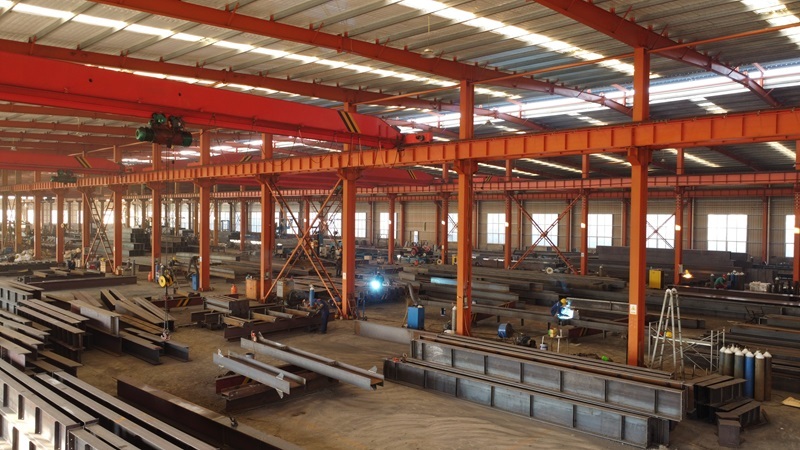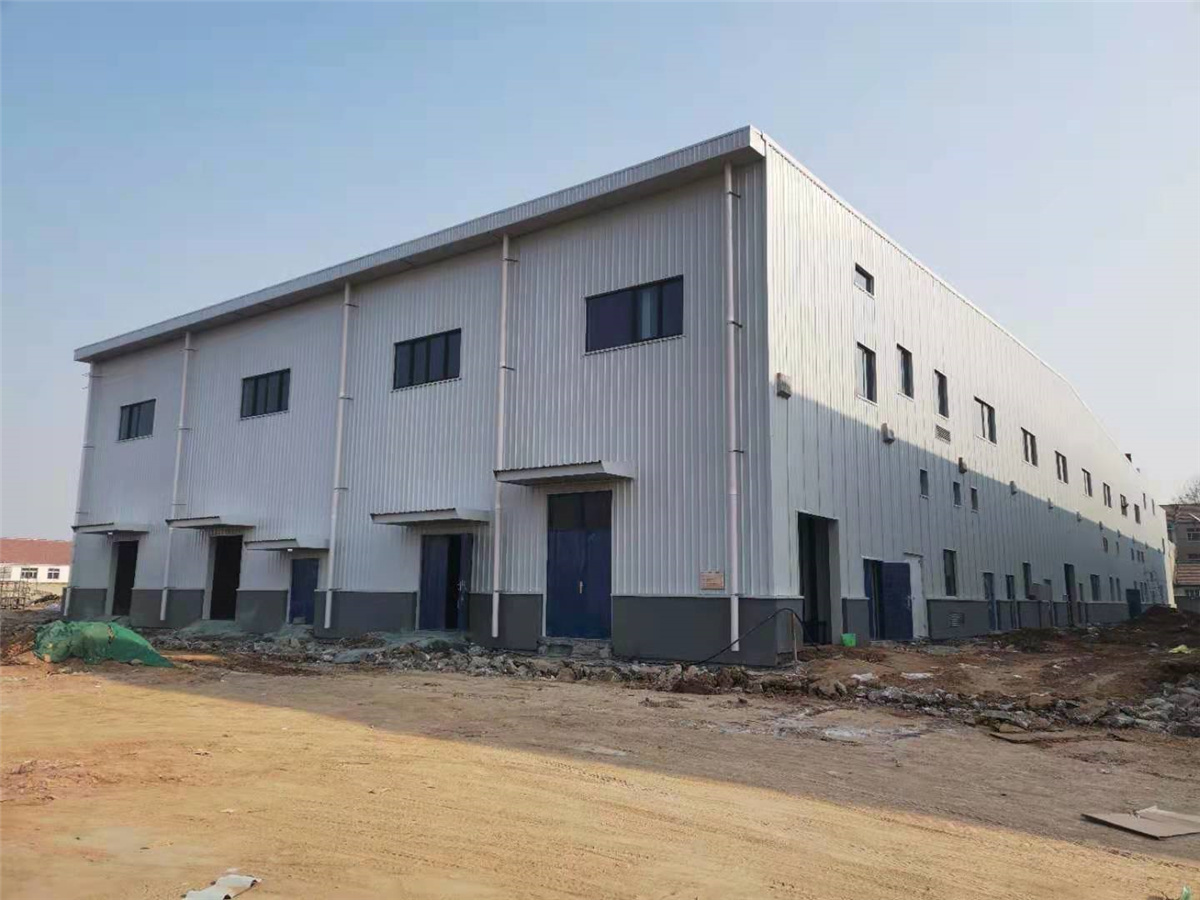The Process Flow in Steel Structure Manufacturing
Release time:
2025-08-04

Steel structure manufacturing is a systematic project that transforms steel into high-precision building components. Its process flow must take into account material properties, design requirements, and construction standards to ensure the strength, stability, and safety of the final product. The following are the core processes of steel structure manufacturing:
1. Raw Material Inspection and Pretreatment
The first step in manufacturing is to conduct strict quality inspection on steel. Through methods such as spectral analysis and mechanical property testing, the material (such as the yield strength of Q355B steel), chemical composition, and appearance quality of raw materials like steel plates and section steels are verified, and materials with defects such as cracks and laminations are rejected.
2. Detailed Design and Splitting
Based on the architectural construction drawings, detailed design is carried out. Using BIM software, the overall structure is split into individual components that can be prefabricated in the factory (such as steel columns, steel beams, and gusset plates), specifying the dimensions, connection methods, and hole positions of each component. At the same time, the component splitting scheme is optimized in combination with the parameters of processing equipment (such as the maximum cutting thickness of the cutting machine) to ensure production feasibility.
3. Cutting and Blanking
According to the detailed design drawings, technologies such as CNC flame cutting, plasma cutting, or laser cutting are used for precise blanking of steel. For special-shaped components or thick steel plates, CNC cutting is required to ensure cutting accuracy (the error is usually controlled within ±1mm), and burrs and slag after cutting are removed to avoid affecting subsequent welding quality.
4. Forming and Processing
Some components need to be formed into specific shapes (such as curved beams, angle steel flanging) through processes like cold bending, hot bending, or stamping. For example, the flange and web of H-shaped steel beams need to be assembled into right angles by an assembling machine to ensure the perpendicularity of the section; for components that need drilling, CNC drilling machines are used for positioning and drilling to ensure the alignment of bolt connection holes.
5. Welding and Assembly
Welding is the core link in steel structure forming. Appropriate welding processes (such as submerged arc welding, gas shielded welding) are selected according to the material and thickness of the components. Before welding, oil stains and impurities at the interface must be cleaned. During welding, welding stress is reduced through preheating and interlayer temperature control to avoid cracks. For important nodes (such as rigid beam-column connections), non-destructive testing (UT flaw detection, MT flaw detection) is required to ensure welding quality.
6. Straightening and Shaping
Components after welding may bend or twist due to thermal deformation. They need to be straightened through mechanical straightening (such as hydraulic straightening machines) or flame straightening (applying external force after local heating) to restore straightness. The straightness error of the straightened components must be controlled within the specified range (such as no more than 1mm per meter) to ensure the docking accuracy during installation.
7. Shot Blasting for Rust Removal
After straightening, the components are subjected to shot blasting for rust removal. Steel shots are projected at high speed onto the surface of the components through a high-speed rotating impeller, thoroughly removing rust, scale, oil stains, and other impurities on the surface, so that the steel surface forms a certain roughness, providing a good adhesion base for subsequent coating and further improving the bonding force and durability of the anti-corrosion coating.
8. Coating and Anti-Corrosion
The coating system is selected according to the service environment (such as humid areas, industrial zones): first, intermediate paint is applied to enhance anti-corrosion ability, and then topcoat is applied to improve weather resistance and aesthetics. The coating thickness must be detected by a thickness gauge (usually the total thickness is not less than 120μm), and adhesion tests are carried out to ensure that the coating is not easy to fall off during transportation and installation.
9. Finished Product Inspection and Delivery
Finally, a comprehensive inspection is conducted on the components: checking dimensions, hole positions, welding quality, and coating thickness, and issuing quality certificates. Qualified components are numbered, packaged according to the installation sequence, and transported to the construction site by logistics, laying the foundation for subsequent on-site assembly and hoisting.
From raw materials to finished products, each link in steel structure manufacturing must strictly control accuracy and quality, which is not only the premise to ensure the safety of building structures but also the key to realizing the efficiency of industrialized construction.
As a source manufacturer of steel structures with over 20 years of experience, we have always regarded quality as the top priority of our products. We strictly control every production process and have won a good reputation among customers.
Related News



